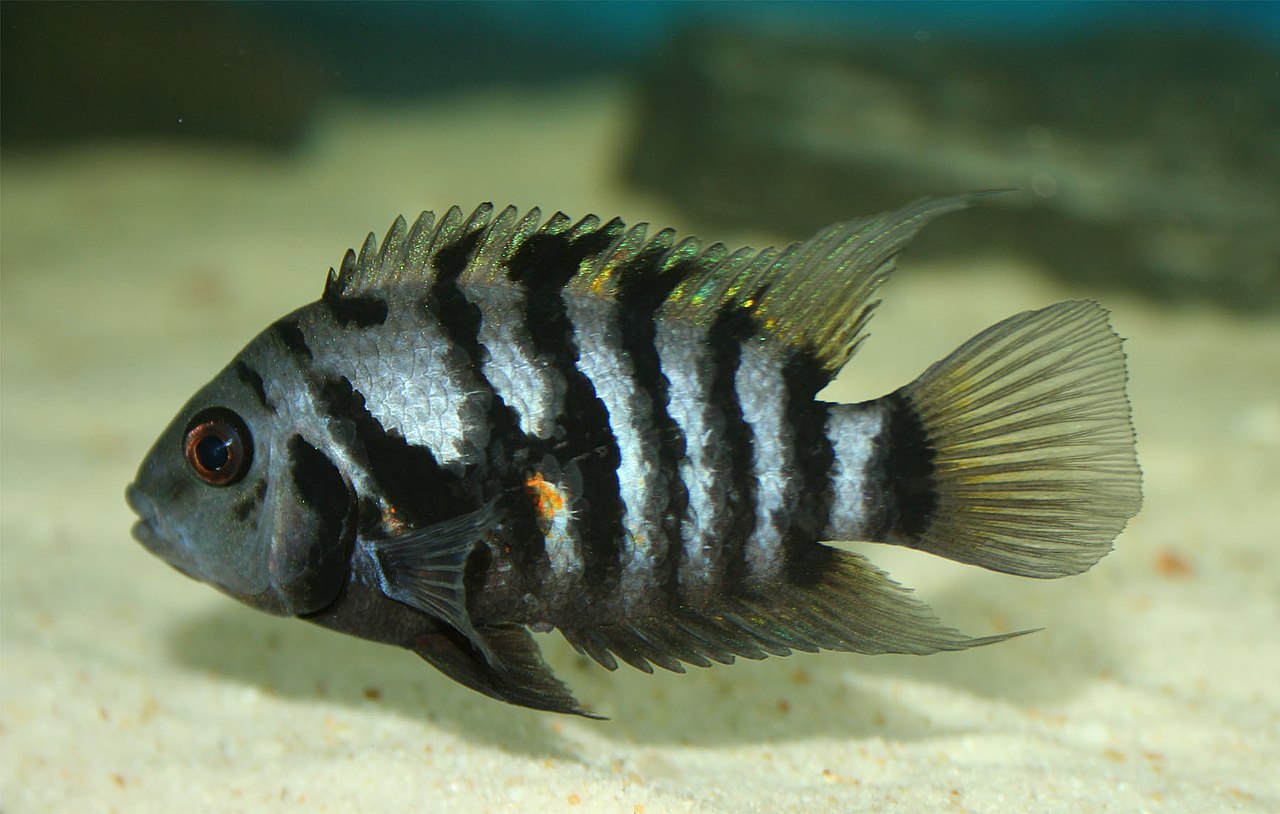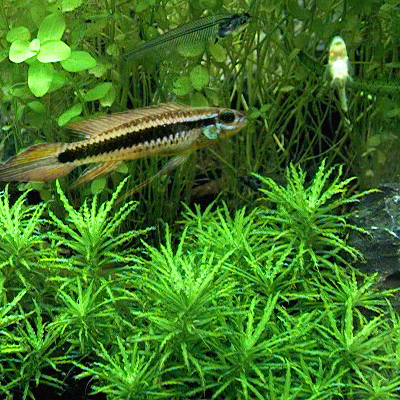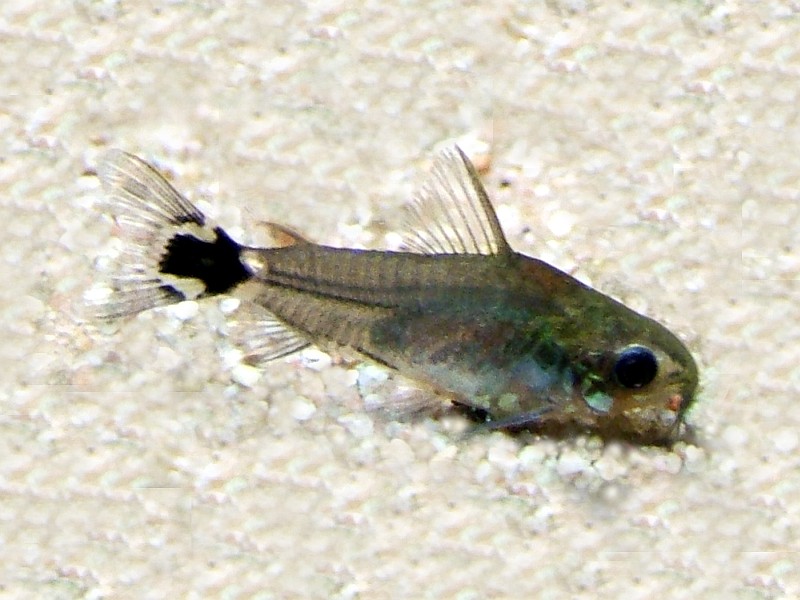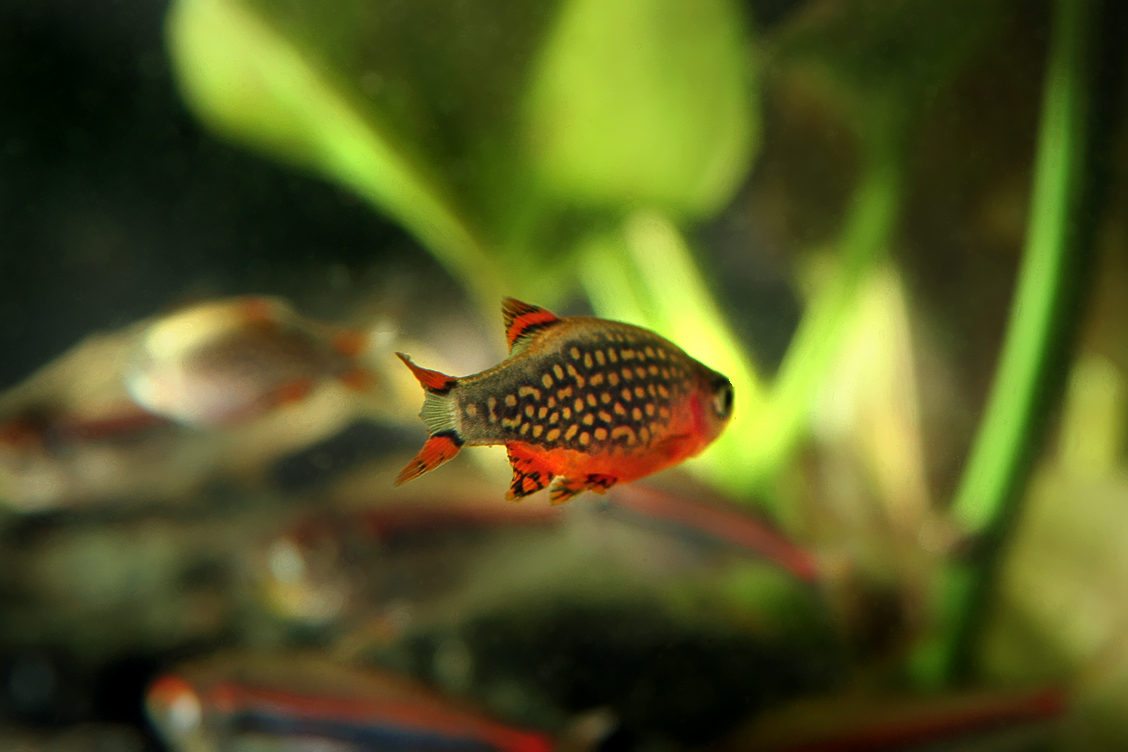Ah, the Convict Cichlids – or as scientists call them, Amatitlania nigrofasciata. These fascinating creatures are a spectacle in the world of fish enthusiasts. Originating from the family Cichlidae, they share this vast category with a myriad of others like the angelfish and discus. What makes them really stand out? A grey-blue shade adorned with vertical dark bands. And for the ladies, a charming orange patch often graces their belly.
Table of Contents
Worried about their rarity? Fret not! Convict Cichlids are among the most common cichlids readily available in the aquarium trade. For those seeking a touch of diversity, why not explore the ever-popular Albino and Pink Convict Cichlid variations? These remarkable fish are renowned for their exceptional colors and mesmerizing patterns. The Marbled Convict Cichlid is another intriguing variant with its captivating marbled color scheme.
Let’s talk about where Convict Cichlids feel most at home. These fish hail from Central America, where they grace the waters from Costa Rica to Panama. Preferring the bottom to mid-sections of their watery abode, they can often be spotted in warm ponds, rivers, and streams. Their omnivorous nature makes them not too picky about their meals. From algae to insects, these fish are pretty flexible, although in captivity, a balanced diet of pellets, flakes, and occasional live treats works wonders. One thing to note: their temperament can be a bit feisty, especially when guarding their territory.
On to some quick-fire stats: expect these fish to live up to a respectable 10 years in captivity. Size-wise, they can stretch up to 4–5 inches, making them a decently sized resident for your tank.
The name “Convict” wasn’t just plucked from thin air. Their distinct stripes resemble a prisoner’s uniform, earning them their unique moniker. Breeding is a strong suit for these cichlids, and they can adapt to a plethora of water conditions. Interestingly, they’ve been a part of our world since 1859, thanks to the French zoologist Charles Frédéric Girard.
Before we conclude, I have an interesting tidbit for you: female Convict Cichlids are known for their remarkable colors, making them a delightful exception in the world of fish. Plus, these water-dwellers believe in love! They form loyal pairs, with both parents pitching in to raise their little ones.
In conclusion, Convict Cichlids are a joy to have, with their vibrant personalities, historical significance, and the ease of care they bring to the table. Delve into their world, and you’re sure to be enchanted.
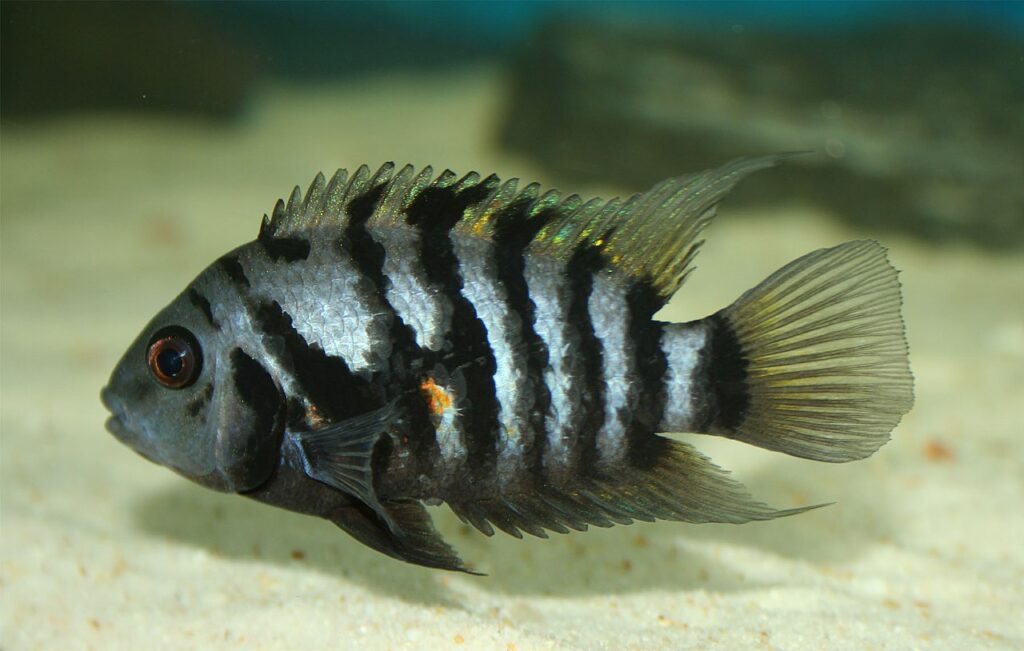
Key Information
Known for their striking appearance and dynamic personality, Convict Cichlids have carved a niche in the hearts of aquarium enthusiasts. Native to Central America, these fish not only boast beautiful markings but also exhibit intriguing behaviors. Here’s a comprehensive table to get you acquainted with all the aspects of Convict Cichlids:
| Family | Cichlidae |
| Price | Typically between $5 to $15, depending on size and variant |
| Common Names | Convict Cichlid, Zebra Cichlid |
| Variants | Albino, Pink, Marbled |
| Ideal Tank Size | Minimum 30 gallons for a pair |
| Water Parameters | pH 6.5-8.0, temperature 22-28°C (72-82°F) |
| Lifespan | Up to 10 years |
| Full Size | 4-5 inches (10-12 cm) |
| Natural Environment | Streams, rivers, and warm ponds in Central America |
| Behavior | Aggressive, especially during breeding |
| Habitat Preference | Bottom to mid-dwelling |
| Aquarium Decoration | Rocks, caves, and plants for hiding and territorial establishment |
| Ideal Tank Mates | Larger tetras, catfish, other larger cichlids |
| Fish to Avoid | Small fish, very aggressive species |
| Best Foods/Diet | Omnivorous: pellets, flakes, live/frozen foods |
| Disease | Susceptible to ich, fin rot, and other common fish diseases |
| Sex-Switch | No known sex-switching |
| Gender Differences | Females have brighter coloration, often with an orange belly patch |
| Care Level | Intermediate |
| Breeding Level | Easy |
Ideal Tank Mates
Convict Cichlids, with their vibrant personalities, can be a joy to watch in an aquarium. However, their territorial and aggressive nature, especially during breeding seasons, can make them a challenge for community tanks. The key to a peaceful aquarium is selecting the right tank mates that can coexist harmoniously with Convict Cichlids. While Convicts can be feisty, many fish species can hold their own and make ideal companions. Let’s delve into ten ideal tank mates for Convict Cichlids:
- Larger Tetras
Species like the Congo Tetra or the Buenos Aires Tetra are active swimmers and can easily evade any potential Convict aggression. Their size also discourages Convicts from viewing them as prey. - Catfish
Varieties like the Cory Catfish or Plecostomus are bottom dwellers, which means they tend to stay out of the Convict Cichlid’s way. Their tough armor also makes them less susceptible to bites. - Firemouth Cichlids
Similar in size and temperament, Firemouths can hold their own against Convicts. Their bright colors can also add vibrancy to your tank. - Giant Danios
These are fast swimmers and tend to stay towards the top of the tank. Their speed and size make them less likely to be bullied by Convict Cichlids. - Rainbowfish
With their shimmering colors and peaceful nature, Rainbowfish can coexist nicely with Convicts, provided the tank offers enough hiding spots. - Jewel Cichlids
Their bright and sparkly appearance complements their feisty nature, making them an ideal match for Convicts. However, ensure your tank has enough space to accommodate territories. - Jack Dempsey
Another cichlid variety, Jack Dempseys, are larger and can handle the territorial nature of Convict Cichlids. It’s crucial to monitor their interactions initially to ensure peaceful coexistence. - Silver Dollars
Peaceful, schooling fish that are large enough not to be considered prey by Convicts. Their schooling nature provides a captivating visual experience as they move in unison. - African Cichlids
Although native to different regions, some African Cichlids, particularly the robust varieties, can coexist with Convict Cichlids. It’s essential to ensure water parameters are suitable for both species. - Barbs
Larger barbs, like Tinfoil or Rosy Barbs, can be a good match due to their size and active nature. They are resilient and can handle occasional chases.
It’s important to remember that while these fish can be viewed as suitable tank mates, the distinct temperament of each fish, the size of the tank, the presence of hiding places, and various other environmental factors all play a significant role in achieving and maintaining a peaceful coexistence within your aquarium. Always monitor new additions closely and be prepared to make adjustments if necessary.
FAQs
Why are Convict Cichlids often recommended for first-time cichlid keepers?
Convict Cichlids are relatively hardy and adaptable, making them forgiving to novice mistakes. Their prolific breeding habits also allow newcomers to observe and learn about cichlid breeding behaviors without much intervention.
How can you differentiate between a juvenile male and a juvenile female Convict Cichlid?
Female fish become more colorful as they age, showing a bright coloration, usually with an orange or pink tint on the belly. This coloration is absent in males.
Do Convict Cichlids need a specific lighting setup in the aquarium?
No, Convict Cichlids are adaptable to various lighting conditions. However, using natural or subdued lighting can help replicate their natural habitat and reduce stress.
Can Convict Cichlids tolerate brackish water?
While primarily freshwater fish, Convict Cichlids have shown some tolerance to slightly brackish conditions. However, it’s not ideal for their long-term health, and fresh water is always preferable.
How often should I feed my Convict Cichlids?
Typically, adult Convict Cichlids should be fed once or twice a day. Juveniles, due to their rapid growth, can be fed two to three times a day. Always ensure the food is consumed within a few minutes and remove any leftovers to maintain water quality.
Can Convict Cichlids be kept in outdoor ponds?
In regions that mimic their natural tropical climate, Convict Cichlids can thrive in outdoor ponds. Ensure the water temperature doesn’t drop too low, and the pond provides enough shelter and hiding spots.
How do Convict Cichlids respond to live plants in the aquarium?
While Convict Cichlids aren’t notorious plant destroyers, during breeding or when establishing territories, they might dig around the substrate, uprooting plants in the process. It’s best to use sturdy plants or ones that can be attached to rocks or driftwood.
Do they have any specific requirements for water flow in the tank?
Convict Cichlids are adaptable and don’t require strong water currents. However, having a moderate flow helps replicate their natural habitat in streams and rivers, and assists in even distribution of nutrients.
Is it safe to keep snails or shrimps with Convict Cichlids?
Convict Cichlids might consider smaller snails and shrimps as food. If you aim to keep them together, ensure you have hiding spots for the smaller invertebrates and monitor their interactions.
Can I use any specific tank decorations to mimic their natural habitat?
Yes, using rocks, driftwood, and caves can help mimic their natural Central American river habitats. This not only provides aesthetic appeal but also gives the fish essential hiding and breeding spots.
Do Convict Cichlids produce any sound?
Interestingly, many cichlids, including Convicts, are known to produce low-frequency sounds, especially during aggressive encounters or mating rituals. However, these sounds are often not audible to humans without specialized equipment.
How do Convict Cichlids handle transportation, say, when purchased from a store?
Generally, Convict Cichlids handle transportation stress better than some other fish species. However, it’s essential to acclimatize them properly when introducing them to a new tank to reduce stress and potential health issues.

